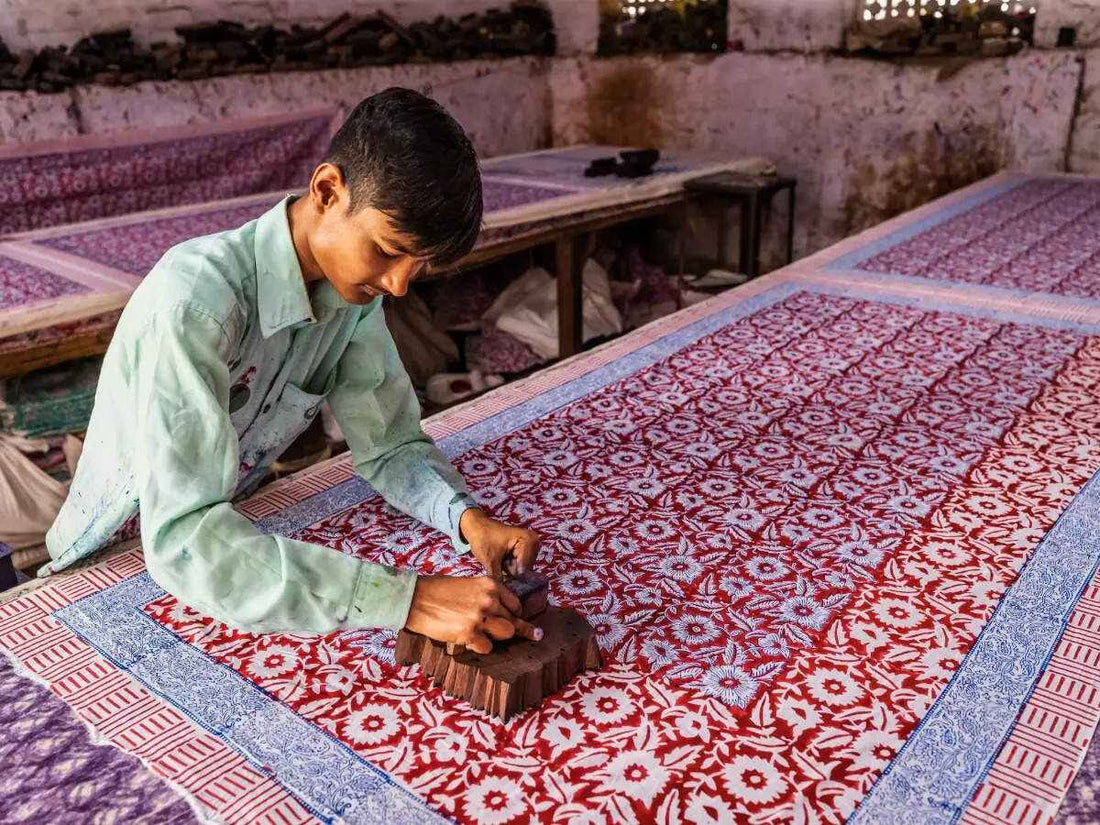History of Block Printing in India
Block printing, an ancient art form, is where artistry meets meticulousness. It's a symphony of carved wooden blocks, vibrant natural dyes, and textiles that transform into breathtaking masterpieces.
The origins of block printing in India are shrouded in the mists of time. Some believe it arrived around 2,000 years ago, possibly inspired by techniques from China. By the 12th century, however, it had blossomed into a distinct art form. Artisans across the subcontinent embraced this technique, employing it on fabrics, paper, and even other materials.
Royal patronage further fueled the growth of block printing. Kings and queens adorned themselves in exquisitely printed textiles, making them a symbol of affluence and artistry. Each region developed its own unique style, using local flora, fauna, and mythology as inspiration for the intricate designs.
Jaipur the Pink city of India, capital of Rajasthan was founded by Maharaja Sawai Jai Singh II and is one of the earliest planned cities of modern India designed by Vidyadhar Bhattacharya. Jaipur, other than its beauty and traditional culture is also famous for Block Printing Art. Block Printing in India in other forms is widely known as “Woodblock Printing”, “Woodcut Printing” or “Hand block Printing”.
Regional Variations in Block Printing
India is one of the most diverse countries in the world: a subcontinent home to over 100 languages, over 700 different tribes and every major religion in the world. India's diversity is reflected in its religions, ethnicities, and customs across a population of 1.4 billion people.
The beauty of Indian block printing lies in its diversity. Here's a glimpse into some of the most prominent regional styles:
-
Sanganeri Printing (Rajasthan): This style, known for its geometric patterns and floral motifs, adorns both clothing and home decor items. Sanganeri prints are often characterized by the use of indigo dye.
-
Bagru Printing (Rajasthan): This unique technique employs natural dyes derived from indigo and various plants. The use of a mud resist allows for the creation of intricate white patterns on a dark background.
-
Kalamkari Printing (Andhra Pradesh): This vibrant art form features elaborate hand-painted or block-printed designs that narrate mythological stories or depict scenes from everyday life. Kalamkari typically uses natural dyes like indigo and lac.
-
Ajrakh Printing (Gujarat & Sindh): This style is known for its geometric patterns and stunning use of indigo blue, red, and black. The intricate process involves multiple resist-dyeing steps, creating a dazzling play of color.
- Dabu Printing (Rajasthan): This fascinating technique uses a resist made from a paste of fermented mud. The intricate process allows for the creation of intricate white patterns on a vibrant dyed background.
The Art of the Craft: The Block Printing Process
The creation of a block printed textile is a labor of love, demanding both skill and patience. Let's have a look at the end to end process now.
-
Carving the Blocks: Firstly, a design is drawn on the paper which is then carved on the wooden block made of teak or sheesham wood. These designs can be inspired by Sanganeri prints, Mughal prints, floral prints, motifs, etc.
The block carving is done separately for individual colours. For example, If two colours: ‘red’ and ‘blue’ are being used in the design, then the woodblock carving needs to be done on two individual blocks for different colours. The more the number of colours in the design, the more the number of wooden blocks that would be needed to make the pattern.
-
Fabric Preparation: The fabric, typically cotton, silk or cotton-silk is pre-washed and treated with mordant, a natural fixative that helps the dye adhere.
-
Mixing the Dyes: Natural dyes derived from plants, minerals, and insects are meticulously prepared using age-old recipes.
-
The Printing Process: The artisan dips the carved block into the dye and then presses it firmly onto the fabric, ensuring perfect alignment for a repeating pattern. This process is repeated for each color used in the design.
- Drying and Washing: Once printed, the fabric is dried in the sun and then washed to remove excess dye and mordant.

